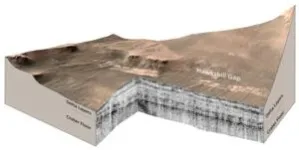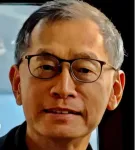(Press-News.org) Scientists at La Jolla Institute for Immunology (LJI) have found direct evidence that exposure to common cold coronaviruses can train T cells to fight SARS-CoV-2. In fact, prior exposure to a common cold coronavirus appears to partially protect mice from lung damage during a subsequent SARS-CoV-2 infection.
The new research, published recently in Nature Communications, provides an important first look at how "cross-reactive" T cells—which can fight multiple viruses from the same family—develop in an animal model. "We are learning how these immune cells develop and function," says study co-leader LJI Research Instructor Annie Elong Ngono, Ph.D.
The Shresta Laboratory is now working to develop novel vaccines purposefully designed to harness these powerful T cells. Those vaccines would protect against SARS-CoV-2 and provide immunity against several other coronaviruses with pandemic potential.
"Our research will help scientists design and improve 'pan-coronavirus' vaccines that elicit broad, cross-protective responses," adds LJI Professor Sujan Shresta, Ph.D., study senior leader and member of LJI's Center for Vaccine Innovation.
How powerful are T cells?
T cells tend to be specialists. They learn to hunt down specific molecular targets, called epitopes, that belong to specific pathogens. "Cross-reactive" T cells are important for human health because they recognize epitope targets on different—but closely related—pathogens, such as different members of the coronavirus family. This viral family includes common cold coronaviruses and serious pathogens such as SARS-CoV-2.
The COVID-19 pandemic put cross-reactive T cells in the spotlight. In early 2020, LJI Professors Shane Crotty, Ph.D., and Alessandro Sette, Dr.Biol.Sci., discovered that many people—who had never been exposed to SARS-CoV-2—already had T cells that recognized the novel coronavirus. How did these T cells know what to look for?
SARS-CoV-2 only emerged in 2019, but many people had contracted common cold coronaviruses long before then. LJI scientists showed that cross-reactive T cells could recognize targets on both viruses. In follow-up studies, researchers even found an association between cross-reactive T cells and a lower risk of developing severe COVID-19.
If T cells could learn to target both viruses at once, perhaps scientists could design a vaccine against many types of coronaviruses, including new SARS-CoV-2 variants. That was the hope—but there was still a lot to learn.
"To design better vaccines we need to know exactly how these protective T cells develop and how long that window of protection lasts," says LJI Postdoctoral Fellow Rúbens Alves, Ph.D., who served as first author of the new study.
The Shresta Lab is working to answer those questions. The lab members specialize in developing humanized mouse models, which allows them to study infectious diseases and human-relevant immune cell responses in a controlled environment.
Cross-reactive T cells to the rescue
For the new study, the researchers used mouse strains that can produce the exact same variety of T cells as the ones found in humans. The researchers infected these mice with one of the most widespread common cold coronaviruses, called OC43. SARS-CoV-2 and OC43 are both betacoronaviruses.
The scientists found that mice infected with OC43 produced CD4+ "helper" T cells and CD8+ "killer" T cells that cross-reacted with SARS-CoV-2. Those cells targeted the same epitopes as T cells collected from humans with SARS-CoV-2 exposure.
Next, the researchers developed a model of sequential infection—with OC43 infection followed by SARS-CoV-2 in these humanized mice. They examined whether the cross-reactive T cells actually helped protect the mice from severe COVID-19.
Cross-reactive CD4+ "helper" T cells did indeed help counteract the virus's assault on the respiratory system. Mice with previous OC43 exposure showed lower levels of SARS-CoV-2 infection in their airways and were less likely to develop pneumonia and lung damage. Cross-reactive T cells really did help prevent severe disease.
"Our lab's expertise in mouse models has allowed us to go deeper into what human studies have suggested," says Elong Ngono.
Next steps for vaccine design
SARS-CoV-2 is not the first coronavirus to cause a deadly outbreak. SARS, which caused a deadly outbreak in 2003, was also a coronavirus. So is MERS. This new study is an important step in understanding how T cells might learn to recognize and cross-react to many coronaviruses at once—including emerging SARS-CoV-2 variants and other family members with pandemic potential.
Going forward, the team would like to investigate how exposure to other kinds of common cold coronaviruses affects T cells. Will cross-reactive T cells still develop? Would they seek the same shared epitopes or different targets?
"We now have the mouse model to study different human infection scenarios, such as the common situation when a person has been infected many times by different common cold coronaviruses before encountering SARS-CoV-2," says Shresta. "We even have a model now to characterize different SARS-CoV-2 vaccine-elicited human relevant T cell responses and determine the contribution of these T cells to the vaccine-induced protection."
Shresta says the Institute is well equipped to move forward with this pandemic prevention research. She credits the LJI for making sure LJI scientists have the vital training and facilities for infectious disease research. Shresta also emphasizes that philanthropic support made it possible for the Institute to construct a biosafety level 3 laboratory for this—and many other—critical studies.
Additional authors of the study, "Common cold coronavirus-elicited CD4+ T cells protect against SARS-CoV-2 in HLA transgenic mice," include Julia Timis, Robyn Miller, Kristen Valentine, Paolla Beatriz Almeida Pinto, Andrew Gonzalez, Jose Angel Regla-Nava, Erin Maule, Michael N Nguyen, Norazizah Shafee, Sara Landeras Bueno, Eduardo Olmedillas, Brett Laffey, Katarzyna Dobaczewska, Zbigniew Mikulski, Sara McArdle, Sarah R. Leist, Kenneth Kim, Ralph S. Baric, and Erica Ollmann Saphire.
This research was supported by the National Institutes of Health (grants U19 AI142790, U01 AI151810, and AI149644), the Overton family, and the Arvin Gottlieb Foundation.
DOI: 10.1038/s41467-024-45043-2
About La Jolla Institute
La Jolla Institute for Immunology is dedicated to understanding the intricacies and power of the immune system so that we may apply that knowledge to promote human health and prevent a wide range of diseases. Since its founding in 1988 as an independent, nonprofit research organization, the Institute has made numerous advances leading toward its goal: life without disease. Visit lji.org for more information.
END
Common cold or COVID-19? Some T cells are ready to combat both
New LJI research demonstrates the importance of harnessing "cross-reactive" T cells to combat SARS-CoV-2
2024-01-26
ELSE PRESS RELEASES FROM THIS DATE:
The science behind mindfulness: How one University of Ottawa professor embraced it for the benefit of her students
2024-01-26
Understanding the neuroscience and physiological basis of the brain and training its networks to combat anxiety and life’s stressors
Professor Andra Smith, from the School of Psychology at the Faculty of Social Sciences, has combined her research and her personal experience with mindfulness to teach the course Neuroscience of Mindfulness: Neurons to Wellness. Her interest in neuroscience explores how to optimize cognitive processes behind decision-making, organizing behaviour, setting goals while taking the necessary steps ...
UC Irvine-led team unravels mysteries of planet formation and evolution in distant solar system
2024-01-26
A recently discovered solar system with six confirmed exoplanets and a possible seventh is boosting astronomers’ knowledge of planet formation and evolution. Relying on a globe-spanning arsenal of observatories and instruments, a team led by researchers at the University of California, Irvine has compiled the most precise measurements yet of the exoplanets’ masses, orbital properties and atmospheric characteristics.
In a paper published today in The Astronomical Journal, the researchers share ...
Confirmation of ancient lake on Mars builds excitement for Perseverance rover's samples
2024-01-26
If life ever existed on Mars, the Perseverance rover’s verification of lake sediments at the base of the Jezero crater reinforces the hope that traces might be found in the crater.
In new research published in the journal Science Advances, a team led by UCLA and The University of Oslo shows that at some point, the crater filled with water, depositing layers of sediments on the crater floor. The lake subsequently shrank and sediments carried by the river that fed it formed an enormous delta. As the lake dissipated over time, the sediments in the crater were eroded, forming ...
USC Stem Cell study shows how gene activity modulates the amount of immune cell production in mice
2024-01-26
As people age or become ill, their immune systems can become exhausted and less capable of fighting off viruses such as the flu or COVID-19. In a new mouse study funded in part by the National Institutes of Health and published in Science Advances, researchers from the USC Stem Cell lab of Rong Lu describe how specific gene activity could potentially enhance immune cell production.
“Hematopoietic stem cells, or HSCs, produce blood and immune cells, but not all HSCs are equally productive,” said the study’s corresponding author Rong Lu, PhD, ...
How waves and mixing drive coastal upwelling systems
2024-01-26
They are among the most productive and biodiverse areas of the world's oceans: coastal upwelling regions along the eastern boundaries of the Atlantic and Pacific Oceans. There, equatorward winds cause near-surface water to move away from the coast. This brings cold, nutrient-rich water from the depths to the surface, inducing the growth of phytoplankton and providing the basis for a rich marine ecosystem in these regions.
In some tropical regions, however, productivity is high even when the upwelling favourable winds are ...
How a timekeeping gene affects tumor growth depends entirely on context
2024-01-26
JANUARY 23, 2024, NEW YORK – A Ludwig Cancer Research study has found that the circadian clock—which synchronizes physiological and cellular activities with the day-night cycle and is generally thought to be tumor suppressive—in fact has a contextually variable role in cancer.
“A lot of evidence suggests that the biological clock is broken in cancer cells, so we expected its disruption would fuel tumor growth in mouse models of melanoma,” said Chi Van Dang, scientific director of the Ludwig Institute for Cancer Research, who led the study with Research Associate Xue Zhang. “But, contrary to our expectations, ...
UT Extension Consumer Economics Specialist named National Educator of the Year for 2023
2024-01-26
An assistant professor and consumer economics specialist with University of Tennessee Extension has been recognized by the Association for Financial Counseling and Planning Education (AFCPE) as the organization’s Educator of the Year for 2023. Christopher Sneed was among ten individuals, organizations, special projects and initiatives expanding access to personal finance resources and education across the country recognized as part of the 2023 AFCPE Awards late last year.
The AFCPE’s Mary Ellen Edmondson Educator of the Year Award honors ...
Female reproductive milestones may be risk factors for diabetes and high cholesterol later in life
2024-01-26
Boston, MA – A new review of available evidence led by researchers at the Harvard Pilgrim Health Care Institute suggests that female reproductive characteristics may be overlooked as risk factors that contribute to later metabolic dysfunction.
The review, “Reproductive risk factors across the female lifecourse and later metabolic health,” was published in the January 26 edition of Cell Metabolism.
Metabolic health is characterized by optimal blood glucose, lipids, blood pressure, and body fat. Alterations in these characteristics may lead to the development of type 2 diabetes or cardiovascular disease.
“Our ...
Using fMRI, new vision study finds promising model for restoring cone function
2024-01-26
In the retinas of human eyes, the cones are photoreceptor cells responsible for color vision, daylight vision, and the perception of small details. As vision scientists from the Division of Experimental Retinal Therapies at the University of Pennsylvania School of Veterinary Medicine, Gustavo D. Aguirre and William A. Beltran have been working for decades to identify the basis of inherited retinal diseases. They previously showed they could recover missing cone function by reintroducing a copy of the normal gene in photoreceptor cells.
Both ...
Wake Forest Institute for Regenerative Medicine awarded $160 million 10-year US National Science Foundation Regional Innovation Engines grant
2024-01-26
WINSTON-SALEM, NC, January 26, 2024 – The Wake Forest Institute for Regenerative Medicine (WFIRM) is the recipient of an inaugural U.S. National Science Foundation (NSF) Engines Program award. The NSF Engines: Piedmont Triad Regenerative Medicine Engine is a regional project that provides an innovation ecosystem to stimulate workforce development, job creation, and economic growth through the development of technologies that benefit the emerging industry. The Piedmont Triad Regenerative Medicine Engine team is led by WFIRM, and includes Forsyth Technical Community College (FTCC), North Carolina Agricultural and Technical State University (N.C. A&T), the RegenMed Development ...
LAST 30 PRESS RELEASES:
Injectable breast ‘implant’ offers alternative to traditional surgeries
Neuroscientists devise formulas to measure multilingualism
New prostate cancer trial seeks to reduce toxicity without sacrificing efficacy
Geometry shapes life
A CRISPR screen reveals many previously unrecognized genes required for brain development and a new neurodevelopmental disorder
Hot flush treatment has anti-breast cancer activity, study finds
Securing AI systems against growing cybersecurity threats
Longest observation of an active solar region
Why nail-biting, procrastination and other self-sabotaging behaviors are rooted in survival instincts
Regional variations in mechanical properties of porcine leptomeninges
Artificial empathy in therapy and healthcare: advancements in interpersonal interaction technologies
Why some brains switch gears more efficiently than others
UVA’s Jundong Li wins ICDM’S 2025 Tao Li Award for data mining, machine learning
UVA’s low-power, high-performance computer power player Mircea Stan earns National Academy of Inventors fellowship
Not playing by the rules: USU researcher explores filamentous algae dynamics in rivers
Do our body clocks influence our risk of dementia?
Anthropologists offer new evidence of bipedalism in long-debated fossil discovery
Safer receipt paper from wood
Dosage-sensitive genes suggest no whole-genome duplications in ancestral angiosperm
First ancient human herpesvirus genomes document their deep history with humans
Why Some Bacteria Survive Antibiotics and How to Stop Them - New study reveals that bacteria can survive antibiotic treatment through two fundamentally different “shutdown modes”
UCLA study links scar healing to dangerous placenta condition
CHANGE-seq-BE finds off-target changes in the genome from base editors
The Journal of Nuclear Medicine Ahead-of-Print Tip Sheet: January 2, 2026
Delayed or absent first dose of measles, mumps, and rubella vaccination
Trends in US preterm birth rates by household income and race and ethnicity
Study identifies potential biomarker linked to progression and brain inflammation in multiple sclerosis
Many mothers in Norway do not show up for postnatal check-ups
Researchers want to find out why quick clay is so unstable
Superradiant spins show teamwork at the quantum scale
[Press-News.org] Common cold or COVID-19? Some T cells are ready to combat bothNew LJI research demonstrates the importance of harnessing "cross-reactive" T cells to combat SARS-CoV-2








